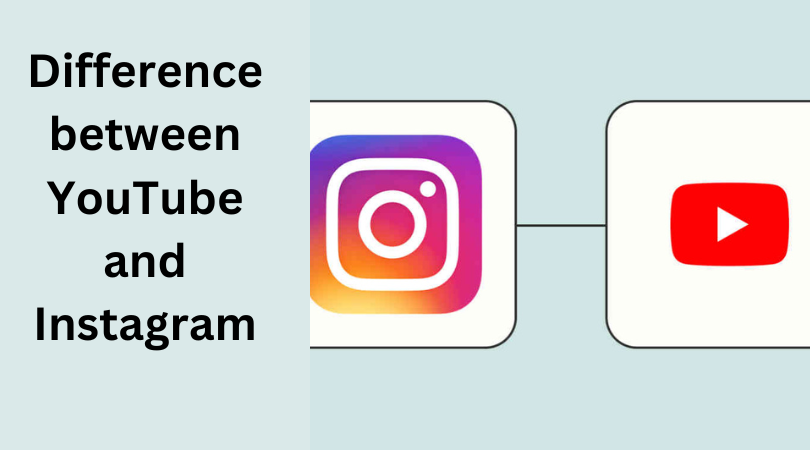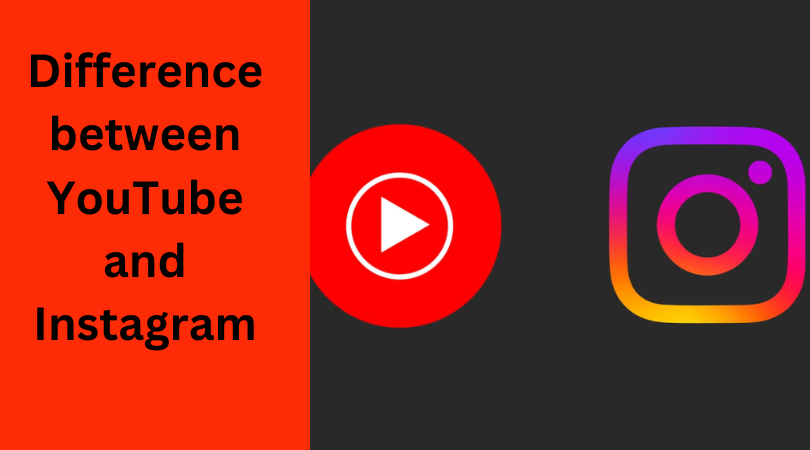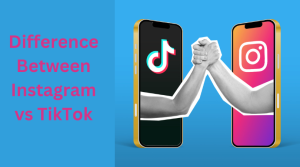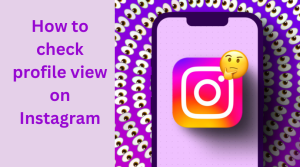In the vast realm of social media platforms, YouTube and Instagram stand out as two giants, each offering unique experiences and opportunities for content creators and users alike. While both platforms cater to visual content consumption, they serve different purposes and have distinct features that set them apart. Let’s delve into the key differences between YouTube and Instagram to understand their respective strengths and appeal.
Content Format:

YouTube:
Renowned as the world’s largest video-sharing platform, YouTube primarily focuses on long-form video content. From tutorials and vlogs to documentaries and music videos, users can upload videos of almost any length and genre.
Instagram:
- On the other hand, Instagram revolves around sharing visual content in the form of photos and short videos. The platform initially gained popularity for its square-shaped images but has since expanded to support various aspect ratios and formats, including Stories, Reels, and IGTV.
Audience Engagement:
YouTube:
With its comment section and community features, YouTube encourages meaningful interactions between creators and viewers. Users can engage in discussions, leave feedback, and even collaborate with creators through features like live streams and community posts.
Instagram:
While Instagram also offers features like comments and direct messages for engagement, its emphasis lies more on quick interactions such as likes, shares, and emoji reactions. Stories, in particular, enable real-time engagement by allowing users to poll their audience or conduct Q&A sessions.
Monetization Opportunities:
YouTube:
One of YouTube’s standout features is its robust monetization options for creators. Through the YouTube Partner Program, eligible creators can earn money from ads displayed on their videos, channel memberships, Super Chat during live streams, and merchandise sales.
Instagram:
Although Instagram has introduced features like IGTV ads and branded content partnerships, its monetization opportunities are relatively limited compared to YouTube. Influencers often rely on sponsored posts, affiliate marketing, and collaborations with brands to monetize their presence on the platform.
Discoverability and Searchability:
YouTube:
With its powerful search engine and recommendation algorithms, YouTube excels in helping users discover new content tailored to their interests. Creators can optimize their videos for search visibility through titles, descriptions, tags, and thumbnails.
Instagram:
While Instagram offers features like hashtags and location tagging to enhance discoverability, its search functionality is not as robust as YouTube’s. Users primarily discover content through their feed, Explore page, and through the accounts they follow.
Content Longevity:
YouTube:
Due to its search-friendly nature and evergreen content, videos on YouTube have a longer shelf life. High-quality videos can continue to attract views and engagement over an extended period, providing creators with a lasting presence on the platform.
Instagram:
Content on Instagram tends to have a shorter lifespan, particularly ephemeral content like Stories and posts in the feed. While these formats encourage timely interactions and FOMO (fear of missing out), they may not have the same longevity as YouTube videos.
conclusion
while both YouTube and Instagram offer platforms for visual content sharing, they cater to different content formats, audience engagement styles, monetization opportunities, discoverability mechanisms, and content lifespans. Understanding these differences is essential for creators seeking to leverage the strengths of each platform to reach and engage their target audience effectively. Whether you’re a vlogger, influencer, or brand, choosing the right platform—or utilizing both strategically—can significantly impact your online presence and success.
F&Q
Why do YouTubers use Instagram?
Behind-the-scenes content and bloopers are fantastic for catching the eye, creating curiosity and hype. In other words, a great way to promote YouTube channel on Instagram. Many followers want to know how their favorite YouTubers make their epic videos and what goes on behind-the-scenes.
Will Instagram replace YouTube?
It’s clear Instagram is going after YouTube, gunning to cut into its long-form market share. Longer Reels could allow creators to post different types of content, like full beauty routines and educational segments.
What is the difference between social media and Instagram?
Instagram does not filter out any posts. It prioritizes posts based on relationship (affinity), interest and relevancy, and timeliness. Unlike other social media platforms, Instagram does not allow users to place links in their posts. They can only add links to their profile and their Stories.
Why is Instagram mostly used for?
On Instagram, the main intention is to share and find the best photos and videos. Every user profile has follower and following counts, representing how many people they follow and how many other users are following them.
===================




